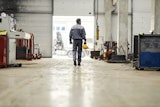Hurricane damage in 2017 reached an estimated $207 billion, making it the costliest hurricane season in recorded U.S. history. With the 2018 hurricane season quickly approaching, June through November, it is more important than ever for manufacturers to be prepared for emergencies caused by high winds, heavy rainfall and flooding.
In addition to destruction and financial devastation, natural disasters can present manufacturers and the communities in which they operate with significant health, safety and environmental risks, often in the form of hazardous spills and leaks.
To reduce the risks of injury, environmental harm or regulatory penalties, a successful disaster response plan requires extensive expertise and knowledge of hazardous materials and waste management, including applicable procedures and regulations.
Often, natural disaster response also requires emergency spill response for fuel spills, chemical spills, DOT hazardous materials spills and EPA hazardous waste spills, as well as critical tasks such as identification of unknown substances, spill containment, proper waste handling and clean-up.
Steps for proper container leak response
For manufacturing decision makers, container leak response is one of the most important elements of a disaster response plan. Here is what manufacturing leaders need to know:
- The two most important steps in any container leak response are identifying the spilled material and securing the container for cleaning.
- For compliance and safety, the entire process must be monitored to ensure timely and accurate communication, proper documentation and appropriate procedures.
- After identifying the leaking material and assessing any immediate threats to human health and the environment, expert technicians should secure both the container and the surrounding area while also ensuring that no additional material is allowed to escape.
- Containers may need to be moved to a secure area, with special attention given to weather and wind direction to maximize safety.
- Technicians may also need to perform air monitoring to check oxygen levels or other potential chemical exposures.
- Specialized equipment for cleaning should be used, which may include HEPA-filter vacuums, salvage drums and disposable cleaning products. Its important to know what the material is so that only compatible clean up materials are used.
- Technicians should separate damaged or contaminated items from any items deemed safe.
When working with a regulated waste management solutions provider, the response manager should take post-event photos and walk any required customer representatives through the area to confirm completion and satisfaction. They should also provide a detailed action report that includes images, a call log and supporting documentation.
One of the biggest missteps for manufacturers during a crisis situation is a lack of adequate communication. Often, leaders take the necessary steps to properly prepare for the disaster, but once an emergency arises, communication breaks down due to weather-related complications. It is imperative to consider all possible situations and communication channels when preparing for a disaster as well as the parties that need to be involved.
Impact of improper planning
Fast response is critical to high-pressure tasks such as identification of unknown substances, spill containment, proper waste handling and clean-up. In the aftermath of a natural disaster, waste and environmental concerns are only a part of a larger, complicated picture. Every hazardous waste emergency response situation must be managed with a commitment to safety and full compliance with all applicable regulations, from the initial response to clean-up and ultimate closeout of all paperwork and reporting to regulatory agencies.
The repercussions of improper hazardous waste management are significant. Some materials are at risk of spontaneous combustion with impact so severe it can put the manufacturer out of operation. Other chemicals may have the ability to destroy concrete or corrode metal and can lead to an entire facility requiring re-construction.
In addition to environmental and safety risks, organizations can face major fines for lack of compliance. Penalties can start from $200 for every occurrence of improper management, which can add up to thousands and even millions of dollars.
Waste is a cost, and disasters can result in a substantial loss of product or material. The negative impact to the top line directly impacts the bottom line. It is important for decision makers to properly prepare and plan for leaks or spills during natural disaster or emergency situations to reduce or mitigate those impacts.
Maricha Ellis is vice president of marketing and sales operations for Stericycle Environmental Solutions.



















